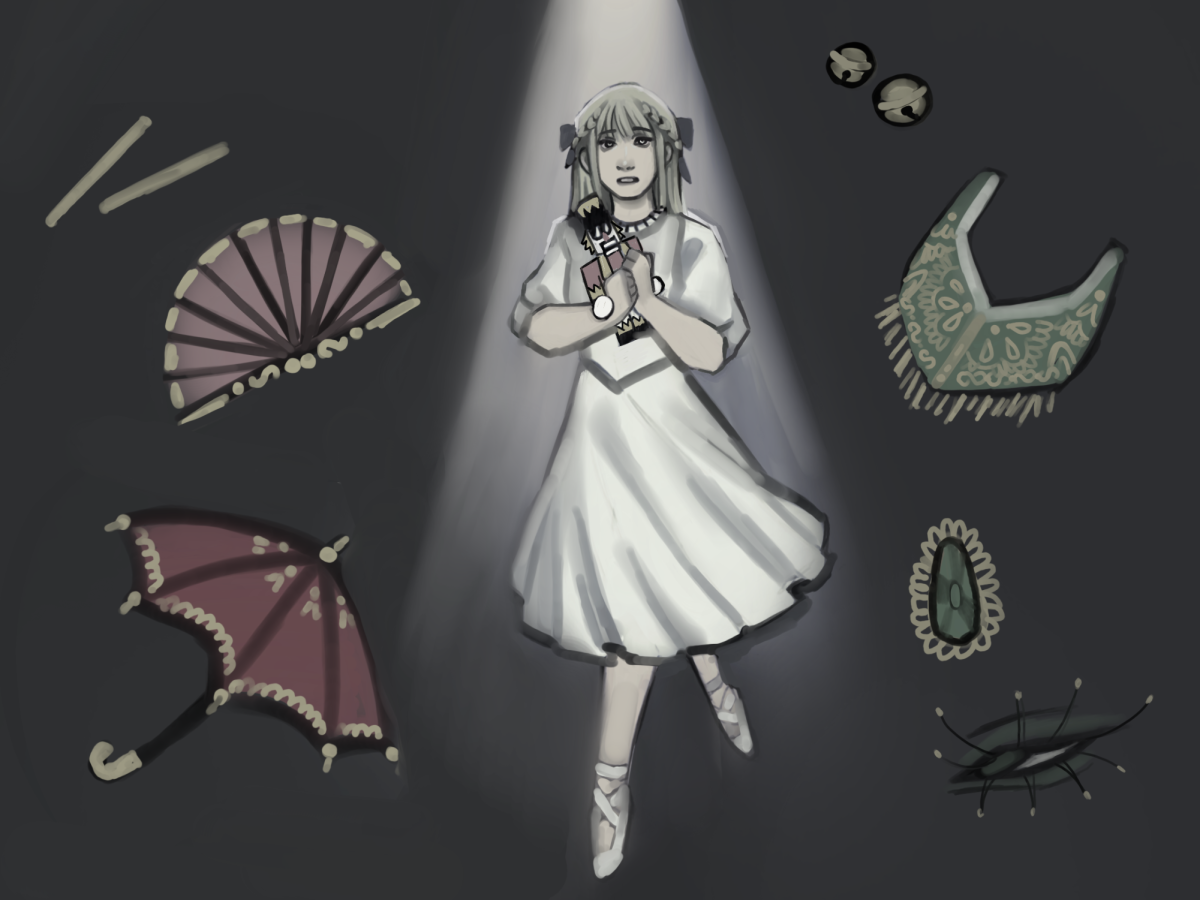Ever since 1892 when Russian composer Pyotr Ilyich Tchaikovsky wrote “The Nutcracker” ballet, holiday traditions have been completely transformed. For over a century, audiences have become captivated by the remarkable music and dancing of this timeless classic. Despite the nostalgia, joy and holiday cheer the Nutcracker brings every December, there are numerous controversies surrounding it.
Clara opens up the story of “The Nutcracker” as a young girl who attends a holiday celebration alongside her brother Fritz. Clara receives a nutcracker from Drosselmeyer, her godfather, but Fritz rips off the head of the nutcracker out of jealousy. Consequently, Drosselmeyer restores the broken nutcracker while Clara falls asleep. Suddenly, an army of mice and their king engage in battle against her nutcracker. Clara tosses her shoe at the king’s head, causing the nutcracker to transform into a charming prince. The prince takes Clara through the Land of Snow where the Waltz of the Snowflakes begins and the first act ends.
In the second act, Clara is welcomed into the Land of the Sweets, a kingdom where dancers perform for her. The dances exhibit a tone-deaf portrayal of Asian traditions, which are more than unsettling. The most notable include the Chinese “Tea” and the Arabian “Coffee” dance ensembles.
Among more traditional productions of “The Nutcracker,” caucasian performers perform the Chinese “Tea” in stereotypical Chinese clothing, appropriating Chinese eye shapes using makeup. As a result, the ballet has normalized non-Asian people imitating Asian stereotypes through blatantly outdated yellowface.
Consequently, the dance has become a product of sheer colonialism and cultural misunderstanding, as dancers point their index fingers like “chopsticks,” excessively bow and misuse Chinese fans and umbrellas. Moreover, Chinese “Tea” has garnered immense criticism as inclusion in ballet becomes a priority for the industry.
Unfortunately, cultural appropriation is revealed in the second act more than once. In the Arabian “Coffee,” dancers often wear revealing clothes, such as a belly shirt, and dress in translucent, multi-colored fabrics and ankle bells. In some depictions, there is pole dancing involved, contributing to the over-sexualization of Arabian culture.
In the dance, ballerinas perform slow, seductive movements, reflecting a common stereotype of Eastern women as exotic and sensual, existing solely for man’s pleasure. The overly sexualized depictions of Arabian and Chinese cultures could easily be reduced if choreographers who specialized in Asian cultural dance had a larger contribution to “The Nutcracker” productions.
Similar acts showcase how paying respect to different cultures can make “The Nutcracker” more inclusive for everyone. A revisionist attitude is necessary, but it is not an unreachable feat by any means. Unfortunately, the founding director of the Richmond Ballet, Stoner Winslett, disagrees.
“There’s not one single thing about ‘The Nutcracker’ that’s racist,” Winslett said in an interview with Dance Magazine. “Last year, with our two Claras and three Sugar Plums, we had a tremendously diverse cast.” Courtesy of the New York Theater Ballet School
However, a diverse cast does not always imply respectful choreography and costumes. Caricatures can still be prominent in a cast of dancers from varying ethnic backgrounds. Making decisive change begins with the companies themselves, not from the dancers who perform what is given to them.
Scottish Ballet’s CEO and artistic director, Christopher Hampson, values the erasure of racial stereotypes in the production itself to ensure dancers can execute an inclusive performance.
“If we are representing a culture, it’s important that we have done our due diligence to ensure it is done so authentically. By rectifying inappropriate cultural stereotypes, we’re adding to the production’s heritage and making it richer,” Hampson said in an interview with BBC.
Unfortunately, many of the issues are rooted in the cultural history of ballet. Since “The Nutcracker” was choreographed over a hundred years ago, a blurred line exists between cultural appreciation and appropriation.
In the 19th century, many countries found traveling to other countries and engaging with new cultures to be a challenge. “The Nutcracker” was created so lower-class individuals could interact with the cultures they saw interpreted on stage, even if they were falsified. Despite the ballet’s original intentions, there are definite undertones of cultural insensitivity that have not aged well.
In this context, the second act can be depicted as a subtle portrayal of European supremacy. Dancers around the world exist solely for Clara’s, a white European’s, entertainment. From Chinese “Tea” to Arabian “Coffee,” Spanish “Chocolate” to Russian “Candy Canes,” the Eurocentric ideals of the Nutcracker cannot be ignored.
Fortunately, the necessary changes are being made. In recent years the Final Bow for Yellowface campaign has become popular, advocating for the elimination of outdated and offensive Asian stereotypes on ballet stages.
According to the Ballet Spot, the Pacific Northwest Ballet recently introduced the Green Tea Cricket to the Chinese “Tea” dance, a symbol of good fortune in Chinese culture. Dance Magazine mentioned The San Francisco Ballet’s “Nutcracker” introduced a culturally specific dragon from Chinatown to their production.
Overall, Ballet is not a progressive art form at its root because it values conformity above all else. While the plot and societal themes of “The Nutcracker” cannot be reinvented, dance companies need to educate themselves on the cultures they depict on stage.
While “The Nutcracker” may be a beloved family tradition and an inspiration for many, it is disheartening to see young dancers perform with no awareness of the cultures they are appropriating. Despite modern-day adaptations, offensive productions of the ballet still exist and promote exclusivity in a world where inclusivity is of the utmost importance.


